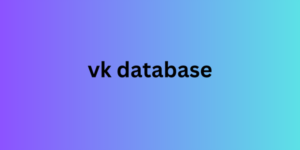However, there are many issues surrounding accessibility. What are they and how can you actually make your web project accessible to everyone? Find the answers in this article.
Digital accessibility: what is it?
Digital accessibility is an approach that consists of making digital tools usable by everyone, regardless of their physical or mental disabilities . By digital tool, we mean websites, intranets and various platforms, mobile applications, software packages and digital street furniture.
Be careful not to confuse accessibility and user comfort ! Making an interface more pleasant to navigate is ergonomics : it is aimed at ordinary users and consists of improving the user experience . Accessibility concerns people who have only limited access, or even no access, to a digital tool, if no specific arrangements have been made.
Webinar
How to optimize the digital accessibility of your website?
Watch the webinar!
What are the challenges of digital accessibility?
Still too often ignored, digital accessibility can be considered a real opportunity .
More and more users are concerned
It is a demographic fact that the French population is aging (1) . With age comes many deficiencies, particularly visual and hearing . While the previous generation used digital tools little, people born after the war do so much more. If you do not make your site accessible to these people, the competition will take care of it.
In 2022, it is estimated that 12 million people are affected by disabilities, or 1 in 6 French people (2) . They all have specific needs and it is impossible to meet them in full. But a few adjustments to your site can nevertheless allow the vast majority of them to access your services .
A better referenced site
Google regularly talks about it: accessibility influences the ranking of its results page . The most used search engine in the world actually tends to favor quality sites. To do this, it takes into account a large number of criteria, including accessibility. For good SEO , think about reviewing your interfaces, the architecture of your site and the quality of the coding.
A legal obligation
If you are not convinced by the two previous issues, here is vk database one that cannot leave you unmoved. Since 2005, digital accessibility has been a legal obligation for public bodies and private companies with an annual turnover of more than 250 million euros. However, this law is not widely respected, because even if sanctions have been provided for in the event of non-compliance, they are not applied.

This reality should change in the coming years, with digital accessibility being one of the major projects of the European Union for the decade 2021-2030. The objectives are autonomy and equal opportunities and it considers that access to the virtual world is a prerequisite. The legal obligation should therefore extend to smaller companies in the coming years. Digital accessibility is definitely a good investment to make.
Also read our article on “ 2 years to make your digital services and products accessible! ”
How to make your web project accessible to everyone?
There are many disabilities and you are probably wondering how to go about meeting everyone's needs. Indeed, between a motor disability that prevents users from handling a mouse and a visual impairment, the adaptations to be made are very different. And rest assured: you will not be able to please absolutely everyone .
In reality, the idea is to register yourself in a process of progressive improvement . If one day your site reaches 100% accessibility, congratulations! But if you reach 50%, it will still be better than your neighbor!
Today, it is estimated that only 3 to 4% of sites are accessible to people with disabilities (3) .
RGAA: recommendations to improve your site
To help you make your site accessible to everyone, you can consult the General Reference for Improving Accessibility or RGAA . A true accessibility bible, it saves you precious time and simplifies your life by guiding you towards simple operations to implement .
The RGAA rules are based on 4 areas which we illustrate here with some concrete examples.
Features : For example, animations can interfere with the readability of the site. It is important to provide a button to stop them .
Design : This particularly concerns colours. For visually impaired or colour-blind users, it is preferable to use other differentiating signs such as shapes or numbers or texts for example.
Development : People with vision problems need to zoom in to read text. You need to make sure that text does not overlap and that page elements fit, regardless of the magnification .
Content : clear and marked texts, subtitled videos and textually described images greatly improve the experience of people who are blind, visually impaired, hard of hearing, etc.
